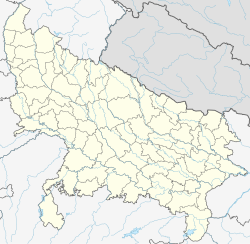Dinganj
Nowadays, Dinganj is a topic of great relevance in today's society. With the advancement of technology and globalization, Dinganj has become very important in different areas of daily life. From the work world to the personal sphere, Dinganj is a topic that has generated various debates and conflicting opinions. In this article, we will explore the different facets of Dinganj and analyze its impact on the world today. From its origins to its evolution over time, Dinganj is a topic that never ceases to surprise us and challenge our beliefs and perspectives.
Dinganj | |
|---|---|
Village | |
 Map showing Dinganj (#975) in Dalmau CD block | |
| Coordinates: 26°03′55″N 81°05′04″E / 26.06518°N 81.084404°E[1] | |
| Country India | |
| State | Uttar Pradesh |
| District | Raebareli |
| Area | |
• Total | 0.467 km2 (0.180 sq mi) |
| Population (2011)[2] | |
• Total | 840 |
| • Density | 1,800/km2 (4,700/sq mi) |
| Languages | |
| • Official | Hindi |
| Time zone | UTC+5:30 (IST) |
| Vehicle registration | UP-35 |
Dinganj is a village in Dalmau block of Rae Bareli district, Uttar Pradesh, India.[2] It is located 4 km from Dalmau, the block headquarters.[3] As of 2011, it has a population of 840 people, in 140 households.[2] It has two primary schools and no healthcare facilities.[2] It hosts a market twice per week, on Tuesdays and Saturdays; cattle, cloth, and vegetables are the main items traded.[4]
The 1961 census recorded Dinganj as comprising 1 hamlet, with a total population of 406 people (208 male and 198 female), in 80 households and 80 physical houses.[4] The area of the village was given as 108 acres.[4] Average attendance of the twice-weekly market was about 200 people.[4]
The 1981 census recorded Dinganj as having a population of 611 people, in 115 households, and having an area of 48.56 hectares.[3] The main staple foods were listed as wheat and rice.[3]
References
- ^ "Geographic Names Search WebApp". Do a radial search using these coordinates here.
- ^ a b c d e "Census of India 2011: Uttar Pradesh District Census Handbook - Rae Bareli, Part A (Village and Town Directory)" (PDF). Census 2011 India. pp. 306–30. Retrieved 18 August 2021.
- ^ a b c Census 1981 Uttar Pradesh: District Census Handbook Part XIII-A: Village & Town Directory, District Rae Bareli (PDF). 1982. pp. 166–7. Retrieved 18 August 2021.
- ^ a b c d Census 1961: District Census Handbook, Uttar Pradesh (39 - Raebareli District) (PDF). Lucknow. 1965. pp. 174, lxxxiv-lxxxv of section "Dalmau Tahsil". Retrieved 18 August 2021.
{{cite book}}: CS1 maint: location missing publisher (link)
